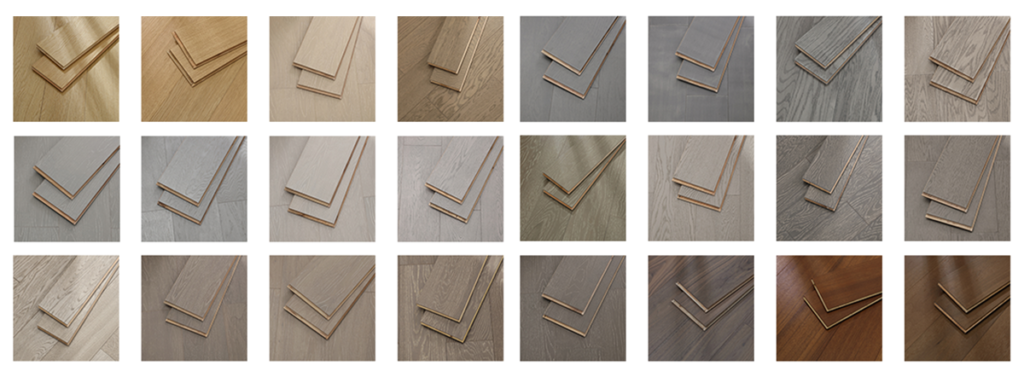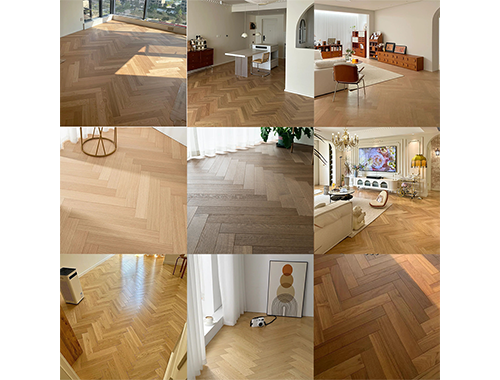
When it comes to selecting the right flooring for a project, understanding the engineered hardwood flooring cost is crucial, especially for contractors. In this article, we'll break down everything you need to know about the costs associated with engineered hardwood flooring in 2024. We’ll cover material costs, installation expenses, hidden fees, and even some tips on how to save money. As a flooring manufacturer, I’ll also share some personal anecdotes and insights from the industry to give you a well-rounded perspective.

One of the first things to consider is the type of engineered hardwood you plan to use. There are various species available, such as oak, maple, and hickory, each with its own price range. For example, oak is often more affordable, whereas exotic woods like Brazilian cherry can significantly increase the cost.
I remember a project where we had to switch from hickory to oak due to budget constraints. Despite the change, the oak still provided a beautiful finish that satisfied the client without breaking the bank.
Engineered hardwood comes in different quality grades. Standard grades are less expensive but may have more knots and color variations. Premium grades are more consistent and aesthetically pleasing but come at a higher price. As a contractor, choosing the right grade can affect both the budget and the client’s satisfaction.
The thickness of the planks and the wear layer also play a significant role in the cost. Thicker planks with a more substantial wear layer are more durable and can be refinished multiple times, but they are also more expensive. For high-traffic areas, investing in higher quality might save money in the long run due to reduced replacement frequency.
The availability of raw materials can fluctuate, impacting prices. For instance, if there’s a shortage of a particular wood species, costs can skyrocket. This happened a couple of years ago when a sudden demand for walnut drove prices up, forcing many contractors to look for alternative materials.
Advancements in production technology have made it possible to reduce costs without compromising quality. Eco-friendly manufacturing processes might have a slightly higher initial cost but can appeal to environmentally conscious clients and potentially save on long-term expenses.
Global events, such as the COVID-19 pandemic, have shown how supply chain disruptions can affect material costs. It's always a good idea to stay informed about global trends that might impact pricing and availability.
The decision to go with professional installation or DIY can significantly impact the overall cost. Professional installation ensures quality and efficiency but comes at a higher price. DIY can save money upfront but might lead to additional costs if mistakes are made.
I once had a client who attempted a DIY installation to save money. Unfortunately, they ended up with misaligned planks and gaps that required professional intervention, costing them more in the long run.
Proper subfloor preparation is essential for a successful installation. Neglecting this step can lead to issues such as uneven flooring or moisture problems. Preparing the subfloor can add to the cost, but it’s a necessary investment to avoid future headaches.
Labor costs vary depending on the region. Urban areas typically have higher labor rates than rural areas. Skilled labor is also more expensive but can ensure a higher quality finish.
Underlayment provides a moisture barrier and sound insulation, essential for the longevity and comfort of the flooring. The type and quality of underlayment can vary in cost, so it's important to choose the right one for your specific needs.
Finishing and sealing are crucial for protecting the flooring and enhancing its appearance. These treatments add to the cost but are necessary for maintaining the floor’s durability and look.
Essential tools for installation can add to the initial cost, especially if they need to be purchased rather than rented. Investing in high-quality tools can improve efficiency and finish quality.

The long-term maintenance costs of engineered hardwood flooring should be considered. While it’s generally durable, it does require periodic maintenance, such as refinishing, to keep it looking its best.
I recall a commercial project where we opted for a thicker wear layer. The initial cost was higher, but the floor has only required one refinishing in over a decade, proving to be cost-effective in the long run.
Offering a warranty can provide peace of mind to clients but may increase initial costs. Insurance for flooring projects is also essential to cover potential damages or issues during installation.
Costs can vary significantly between urban and rural areas due to differences in labor rates, material availability, and logistical expenses. Urban areas typically have higher costs across the board.
Different states have varying cost structures due to local regulations, availability of materials, and economic conditions. For example, flooring costs in California might be higher than in Texas due to stricter environmental regulations and higher demand.
Local market conditions, such as the presence of numerous suppliers or high demand for certain types of flooring, can also impact costs. Staying informed about local trends can help in planning and budgeting.
Buying materials in bulk can lead to significant discounts. This approach works well for large projects or if you can store the materials safely.
Certain times of the year, like the end of the financial quarter, often see sales and promotions from suppliers. Timing your purchases to coincide with these sales can result in substantial savings.
Developing strong relationships with suppliers can lead to better pricing, priority service, and access to exclusive deals. It’s worth investing time in networking and establishing trust with your suppliers.
Keeping an eye on industry trends can help you anticipate cost changes. For 2024, we expect continued innovation in eco-friendly materials and production processes, which might affect prices.
New technologies, such as advanced digital printing techniques for wear layers, could reduce costs and improve product quality. Staying updated on these innovations can give you a competitive edge.
Stricter environmental regulations are likely to increase production costs but can also open opportunities for marketing eco-friendly products to conscientious consumers.
Understanding the real cost of engineered hardwood flooring involves considering material expenses, installation fees, hidden costs, and regional variations. By staying informed and strategic, you can ensure you get the best value for your projects and clients. Remember, investing in quality materials and skilled labor can save money in the long run by reducing maintenance and replacement costs.
For more detailed information or to get a personalized quote, feel free to contact us. We’re here to help you make informed decisions and achieve the best results for your flooring projects. Don’t forget to subscribe to our updates for the latest trends and pricing in the flooring industry. Visit apolloxyflooring.com or apolloxydecor.com for more information.


